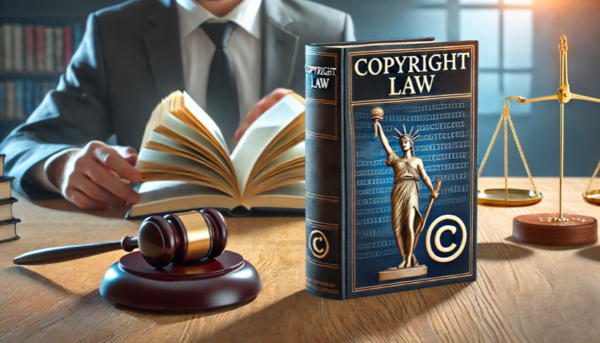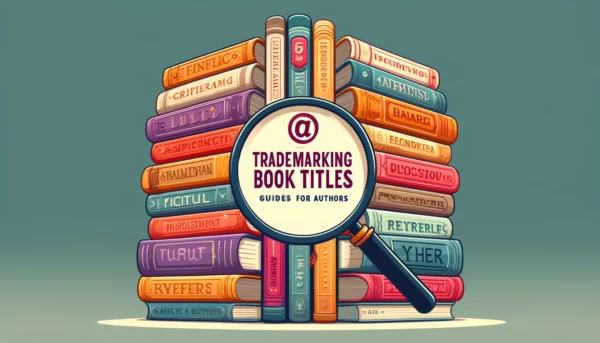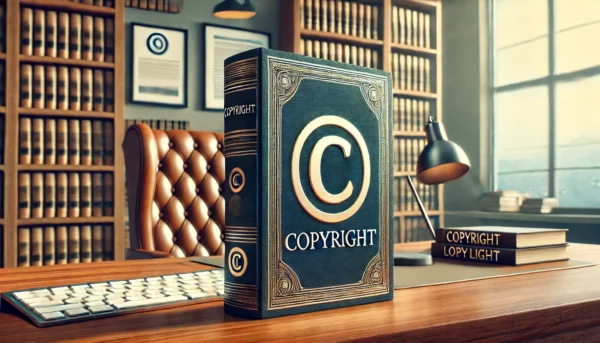In the realm of publishing, cover art is more than just an embellishment; it serves as a critical marketing and advertising tool, often being the first point of interaction between a book and its prospective audience. This visual allure not only encapsulates the essence of the literary work within but also plays a pivotal role in attracting and engaging readers at first glance. As such, the protection of these creative expressions through cover art copyright is paramount, safeguarding the rights of artists and publishers while ensuring that this initial spark of interest remains both original and lawful. This introduction sets the foundation for a deeper exploration into the nuances of cover art copyright, underscoring its significance in the intricate tapestry of book publishing.
Understanding Cover Art Copyright
Cover art copyright refers to the legal right granted to artists or publishers over the original artwork created and used as book covers, protecting it from unauthorized use or reproduction. Rooted in copyright law, this right is automatically bestowed upon the creation of artwork that is created and fixed in a tangible medium of expression, such as a painting, drawing, or digital picture or illustration, making it perceivable either directly or with the aid of a device.
This legal framework ensures that the creator has exclusive rights to use, distribute, sell, and modify images of the cover art, as well as to request and grant permission for others to do the same under specific terms. For artists and publishers, copyright in cover art is crucial, as it not only validates and secures their creative and financial investment in these artworks but also empowers them to control how their work is used and presented in the market, thereby preserving the originality and integrity of their literary and artistic contributions.
Start Your Publishing Journey FOR FREEThe Creation Process and Copyright Ownership
The journey of creating cover art typically begins with a publisher or author commissioning an artist, and outlining the vision and requirements for the book’s visual representation. Artists then translate these ideas into tangible artworks through sketches and revisions, culminating in a final piece that encapsulates the book’s essence. Copyright ownership hinges on the nature of the artist’s engagement: if the artist is an employee creating cover art as part of their job duties, the employer (publisher or author) typically holds the copyright as a “work made for hire.”
However, please note that if the artist is an independent contractor, copyright generally resides with the artist unless an agreement specifies otherwise. This distinction underscores the importance of clear contracts that address copyright ownership and rights of use, ensuring both parties interests are protected and expectations are aligned. Understanding and negotiating these terms upfront can prevent disputes and clarify the scope of the agreement and rights for reproducing and using the cover art in various formats and media.
Registering Copyright
To fortify the legal protections of cover art, registering the copyright with the copyright office is a strategic move. This formal process begins with the completion of a copyright application, available through the copyright office’s website. Applicants must provide detailed information about the work, including the title of the book cover art, the date of creation, and the author’s details. It’s essential to also submit a copy of the artwork, which serves as a deposit required for registration.
Digital submissions are encouraged for efficiency, and the website guides applicants through each step, ensuring clarity. The application also involves a fee, which varies based on factors like the method of submission and the type of work being registered. Upon successful submission, the copyright office reviews the application, and once approved, issues a certificate of copyright, solidifying the legal protection of the cover art. This certificate is a powerful tool in enforcing copyright, providing a clear basis for legal action against unauthorized use. Practical and helpful tips for a smooth process include ensuring all information is accurate and complete, keeping a copy of the submission records, consulting the copyright office’s resources, or seeking legal advice if uncertainties arise.
Licensing and Permission
Licensing cover art involves granting legal permission for others to use the artwork under specific terms and conditions. An exclusive license allows only the licensee the right to use the cover art, effectively barring others, including the copyright owner, from using it in the same manner during the license term. In contrast, a non-exclusive license permits the copyright owner to grant the same usage rights to multiple parties. This distinction is crucial for publishers and artists to consider, based on their intended use and distribution plans for the cover art.
Start Your Publishing Journey FOR FREEPermission becomes particularly important when incorporating existing works, like stock photos or previously published artwork, into new cover art. In these cases, obtaining a license from the copyright holder of the stock photo or original work is necessary to avoid copyright infringement. This ensures that all creative contributions are respected and legally utilized, maintaining the integrity of the work created while acknowledging and compensating the original creators. Understanding and navigating these licensing dynamics are essential for legally safeguarding and leveraging cover art in the publishing industry.
Copyright Infringement and Enforcement
Copyright infringement in the context of cover art occurs when someone uses the artwork without permission or beyond the scope of any granted license, violating the exclusive rights of the work created by the copyright holder. This can include unauthorized reproduction, distribution, or creation of derivative works based on the original cover art. Remedies available to copyright holders include filing a lawsuit for damages, which can cover lost profits and statutory damages, and seeking injunctive relief to stop further infringement.
To guard against infringement, copyright holders should actively monitor the use of their cover art, especially online and in marketplaces where books are sold. Tools and services that scan the internet for visual content can help identify unauthorized uses. If infringement is detected, it’s advisable for the copyright holder to first attempt resolution through a cease-and-desist letter, clearly stating the copyright violation and demanding cessation of the infringing activity. Should this approach fail to resolve the issue, consulting a copyright attorney to explore legal options becomes the next step. Taking these proactive measures ensures the protection and respect of copyright in cover art, maintaining its value and the rights of its creators.
Navigating Copyright Issues with Professional Help
In the intricate domain of copyright law, particularly concerning cover art, the guidance of seasoned professionals like copyright attorneys is indispensable. These experts bring a wealth of knowledge and experience to the table, helping artists and publishers navigate the complex web of legal rights and obligations. From drafting robust contracts that clearly delineate rights and responsibilities to advising on the nuances of licensing agreements, copyright attorneys play a crucial role in ensuring that creative works are adequately protected.
Moreover, in the event of copyright infringement, by graphic artist having a legal expert by your side can make a significant difference in the outcome. Whether it’s formulating a strategy for amicable resolution or pursuing legal action, the expertise of a copyright attorney can provide a clear path forward. Their assistance not only safeguards the artistic and financial interests involved but also ensures that any disputes are resolved in a manner that upholds the integrity and value of whoever owns the copyrighted work. Engaging with such professionals is a prudent step towards effectively managing and protecting one’s copyright interests in the realm of cover art.
Incorporating Artificial Intelligence (AI)
Incorporating Artificial Intelligence (AI) into the copyright acquisition process can markedly refine and expedite the safeguarding of intellectual property for creators and authors. AI technologies are capable of automating the evaluation of works for uniqueness, aiding in the drafting and submission of copyright registration forms, and surveilling the internet for potential copyright violations with exceptional precision and swiftness. In the contemporary digital landscape, a variety of companies offer solutions to assist authors in securing copyrights for their creations. A great example is Spines, an AI-driven publishing platform that streamlines the publication process for authors. Spines provides everything authors need to publish and promote their books, from services including book cover design, audiobook creation, editing, and formatting, all designed to ensure a smooth and efficient path to publication. Authors can publish their book in as little as 30 days. Among the array of other services Spines offers is support in acquiring the requisite copyrights for authors’ works, further easing the journey from manuscript to published book. Authors can sign up for free to start their publishing journey.
Start Your Publishing Journey FOR FREEIn conclusion, the realm of cover art is not just an arena of creativity but also one of legal significance. Understanding and actively safeguarding copyright in this domain is essential for maintaining the integrity and value of both the artist’s and the publisher’s contributions. It ensures that the visual gateway to the literary world remains not only captivating but also protected under the law. By navigating copyright with diligence and respect, creators and publishers can continue to inspire, engage, and connect with audiences, preserving the unique identity and essence of each literary work through its cover art.
Frequently Asked Questions (FAQ)
Q1: What is cover art copyright?
A1: Cover art copyright is the legal protection granted to the creator of the original artwork created and used on book covers, safeguarding it against unauthorized use, reproduction, or distribution. It ensures that the rights to the artwork remain with the creator or the party legally entitled to hold those rights.
Q2: How is copyright ownership determined for cover art?
A2: Copyright ownership depends on the creation context. If the artist is an employee and they are paid to create, the employer typically holds the copyright. For independent contractors, the artist usually retains copyright unless an agreement specifies otherwise.
Q3: Do I need to register my cover art with the copyright office?
A3: While copyright protection is automatic upon creation, registering with the copyright office provides legal advantages, such as eligibility for statutory damages and a public record of copyright, which can be crucial in infringement cases.
Q4: What’s the difference between an exclusive and a non-exclusive license for cover art?
A4: An exclusive license allows only one person, the licensee to use and sell the cover art in the agreed manner, while a non-exclusive license permits the copyright owner to grant similar rights to multiple parties.
Q5: What should I do if my cover art is infringed upon?
A5: Initially, consider sending a cease-and-desist letter to the infringing party. If the infringement continues, consulting with or hiring a copyright attorney to explore further legal actions is advisable.
Start Your Publishing Journey FOR FREE








